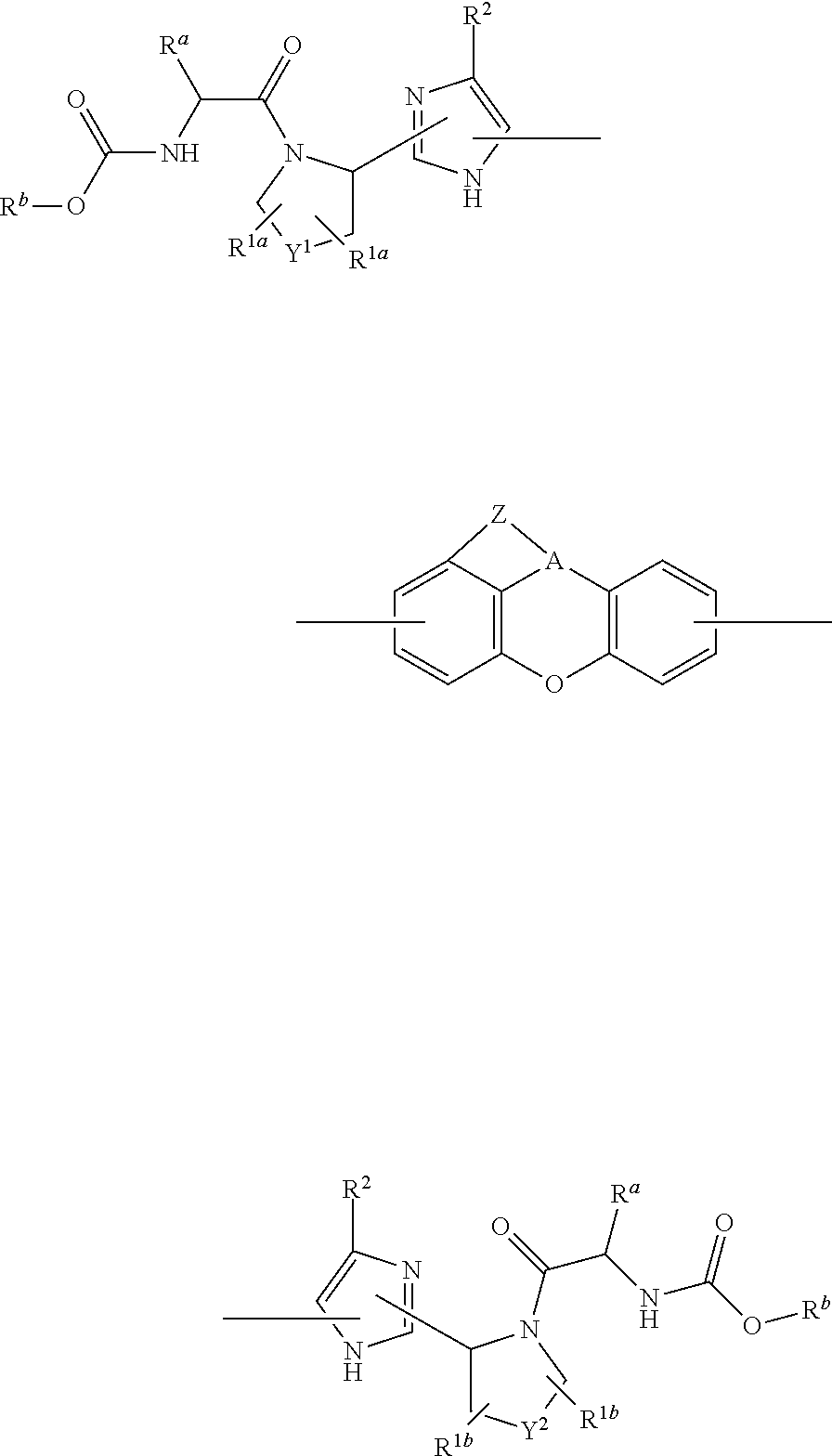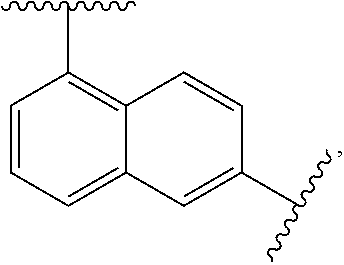Tetracyclic xanthene derivatives and methods of use thereof for the treatment of viral diseases
a technology of tetracyclic xanthene and derivatives, which is applied in the field of tetracyclic xanthene derivatives, can solve the problems of poor efficacy, unfavorable side effects, and serious progressive liver disease of infected individuals, and achieve the effects of inhibiting hcv viral replication, and treating or preventing hcv infection
- Summary
- Abstract
- Description
- Claims
- Application Information
AI Technical Summary
Benefits of technology
Problems solved by technology
Method used
Image
Examples
example 1
Preparation of Intermediate Compound Int-1a
[0241]
[0242]To a solution of L-valine (10.0 g, 85.3 mmol) in 1M aqueous NaOH solution (86 mL) at room temperature was added solid sodium carbonate (4.60 g, 43.4 mmol). The reaction mixture was cooled to 0° C. (ice bath), then methyl chloroformate (7.20 mL, 93.6 mmol) was added dropwise over 20 minutes. The reaction mixture was allowed to warm to room temperature and allowed to stir at this temperature for an additional 4 hours. The reaction mixture was then diluted with diethyl ether (100 mL), the resulting solution was cooled to 0° C., then concentrated hydrochloric acid (18 mL, 216 mmol) was added slowly. The resulting solution was extracted with EtOAc (3×100 mL) and the combined organics were dried over MgSO4, filtered and concentrated in vacuo to provide Compound Int-la (13.5 g, 90%), which was used without further purification.
example 2
Preparation of Intermediate Compound Int-2a
[0243]
[0244]To a solution of D-phenylglycine (10.0 g, 66.1 mmol) and NaOH (21.2 g, 265 mmol) in water (60 mL) at 0° C. was added methyl chloroformate (10.2 mL, 133 mmol) dropwise over 20 minutes. The resulting reaction was allowed to stir at 0° C. for 1 hour, then was acidified using concentrated hydrochloric acid (25 mL, 300 mmol). The acidic solution was extracted with EtOAc (3×100 mL) and the combined organics were dried over MgSO4, filtered and concentrated in vacuo to provide compound Int-2a (12.6 g, 91%), which was used without further purification.
example 3
Preparation of Intermediate Compounds Int-3a and 3b
[0245]The following intermediates can be prepared from L-tert-butylglycine and L-cyclopropylglycine with methyl chloroformate, respectively, using the method described in Example 2:
PUM
| Property | Measurement | Unit |
|---|---|---|
| temperature | aaaaa | aaaaa |
| temperature | aaaaa | aaaaa |
| temperature | aaaaa | aaaaa |
Abstract
Description
Claims
Application Information
 Login to View More
Login to View More - R&D
- Intellectual Property
- Life Sciences
- Materials
- Tech Scout
- Unparalleled Data Quality
- Higher Quality Content
- 60% Fewer Hallucinations
Browse by: Latest US Patents, China's latest patents, Technical Efficacy Thesaurus, Application Domain, Technology Topic, Popular Technical Reports.
© 2025 PatSnap. All rights reserved.Legal|Privacy policy|Modern Slavery Act Transparency Statement|Sitemap|About US| Contact US: help@patsnap.com



